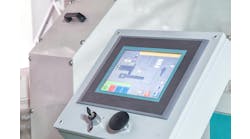Mike Bacidore is the editor in chief for Control Design magazine. He is an award-winning columnist, earning a Gold Regional Award and a Silver National Award from the American Society of Business Publication Editors. Email him at [email protected].
Jim Barry, Michael Batchelor, TJ McDermott and Rick Rice—these are individuals you need to know. Four of the most expansive thinkers in the machine-building technology space, these engineering veterans comprise the Control Design Editorial Advisory Board.
As an introduction, they shared their thoughts on a variety of topics, from motion control and wireless sensing to control platforms and cybersecurity. Here is their take on what's new in operator interfaces.
CD: Operator interface is the portal between the humans in the plant and control of the machinery and its operations. What’s new with interfaces in terms of limiting/identifying access, creating more intuitive/graphic displays, and improving safe interaction?
Rick Rice: There have certainly been interesting developments with respect to the operator interface. Improved graphics is a great improvement, as it allows for better readability and the ability to put more information in a more-organized way on a particular screen.
Some vendors are providing template or example code to help implement control systems at a faster rate. I don’t particularly like this, especially if the machine builder uses the templates directly. This is the easy way to do it, but it doesn’t allow for individuality and takes out the artistic element of creating an operator interface. I use them as a guide to give me a tested way to utilize the hardware but prefer to build my screens to my own look and feel.
Access is a touchy item with me. I like to use a PLC-based user login system because I can lock the code in so that passwords can’t be changed. Many or most hardware providers now include user management, as well as recipe management, as standard features. The trouble with this comes if the operator interface fails. All of your operator login information and recipes are stored on an HMI that doesn’t always get backed up or at least isn’t done on a regular basis.
Access also alludes to access via a network connection. There has been an effort by some hardware providers to build their own versions of a network hierarchy management system. I am reluctant to embrace this as it puts a lot of power and an IT professional in the operator interface. Perhaps I am old-school, but I believe that an operator interface is exactly that, a means of interface between the PLC and operator. I suppose I might be a little inside the box about this as I’m sure some time spent on the network-architecture side of development might make me an easy convert.
Jim Barry: Most people in the workforce work with extremely high-resolution, intuitive, multi-touch operator interfaces outside the work place with their cell phones and tablets. We are working to bring this level of intuitive and powerful control to our machines. This involves more than replacing artwork for push buttons, adding icons and pictures. Providing real value to our end user requires a study of the user interaction and, in many cases, code work at the HMI and control levels. This is an ongoing effort at Arpac.




